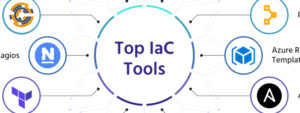
In our previous post, we explored essential DevOps practices that drive modern software development. One of the most critical practices is Continuous Integration (CI)—a methodology that helps teams build, test, and integrate code changes efficiently. The benefits of Continuous Integration are numerous, from improving code quality to accelerating development cycles. But what exactly is CI, and why is it so important? Let’s break it down.
📌 Missed our previous post? Read Why DevOps Matters to understand the foundation of DevOps.
What is Continuous Integration (CI)?
Continuous Integration (CI) is a DevOps practice where developers frequently merge their code changes into a shared repository. Each integration triggers an automated build and testing process, ensuring that new code is compatible with the existing codebase. This process helps identify issues early, reducing the risk of major failures later in the development cycle.
🚀 Key components of CI:
- Version Control: Using tools like Git to track changes and manage code repositories.
- Automated Testing: Running unit, integration, and functional tests to catch bugs early.
- Build Automation: Ensuring code compiles correctly and dependencies are managed properly.
- Frequent Code Commits: Encouraging developers to commit small, incremental changes frequently.
Why is Continuous Integration Important?
Without CI, development teams often face integration challenges when merging code changes. This can lead to conflicts, delayed releases, and unstable applications. By implementing CI, teams ensure that new code integrates smoothly, reducing manual work and improving collaboration.
Key Benefits of Continuous Integration
The benefits of Continuous Integration extend across the entire development lifecycle, improving efficiency, quality, and collaboration.
- Early Bug Detection 🐞
- CI automates testing, catching issues before they reach production.
- Developers receive immediate feedback, making it easier to fix bugs quickly.
- Faster Development Cycles ⚡
- Small, frequent commits reduce the complexity of code changes.
- Teams can release features faster and with more confidence.
- Improved Code Quality 🏆
- Automated tests ensure that new code meets quality standards.
- CI encourages best practices, such as code reviews and consistent formatting.
- Reduced Integration Issues 🔄
- Frequent merging minimizes conflicts and simplifies troubleshooting.
- Teams spend less time fixing integration problems and more time building features.
- Better Collaboration 🤝
- CI fosters teamwork by ensuring all developers work on an up-to-date codebase.
- Shared repositories promote transparency and accountability.
How to Implement Continuous Integration
Getting started with CI requires setting up an automated pipeline that integrates, builds, and tests code changes. Here are the key steps:
- Use a Version Control System (VCS) 🛠️
- Git is the most popular choice, with repositories hosted on GitHub, GitLab, or Bitbucket.
- Choose a CI Tool 🔧
- Popular options include Jenkins, GitHub Actions, GitLab CI/CD, Travis CI, and CircleCI.
- Automate Testing ✅
- Implement unit tests, integration tests, and functional tests to validate code quality.
- Define a Build Pipeline 📦
- Create workflows that automatically compile code, run tests, and provide feedback.
- Integrate with Deployment Pipelines (CI/CD) 🚀
- Combine CI with Continuous Delivery (CD) to automate deployments and accelerate releases.
Conclusion
Adopting Continuous Integration (CI) is a game-changer for DevOps teams. The benefits of Continuous Integration include enhanced collaboration, improved code quality, and faster development cycles. By integrating CI into your workflow, you ensure that every code change is tested, reliable, and ready for deployment.
Are you using CI in your projects? Which tools have been most effective for you? Share your thoughts in the comments! 🚀
📢 Stay tuned for our next post, where we’ll explore Continuous Delivery (CD) and how it complements CI!

